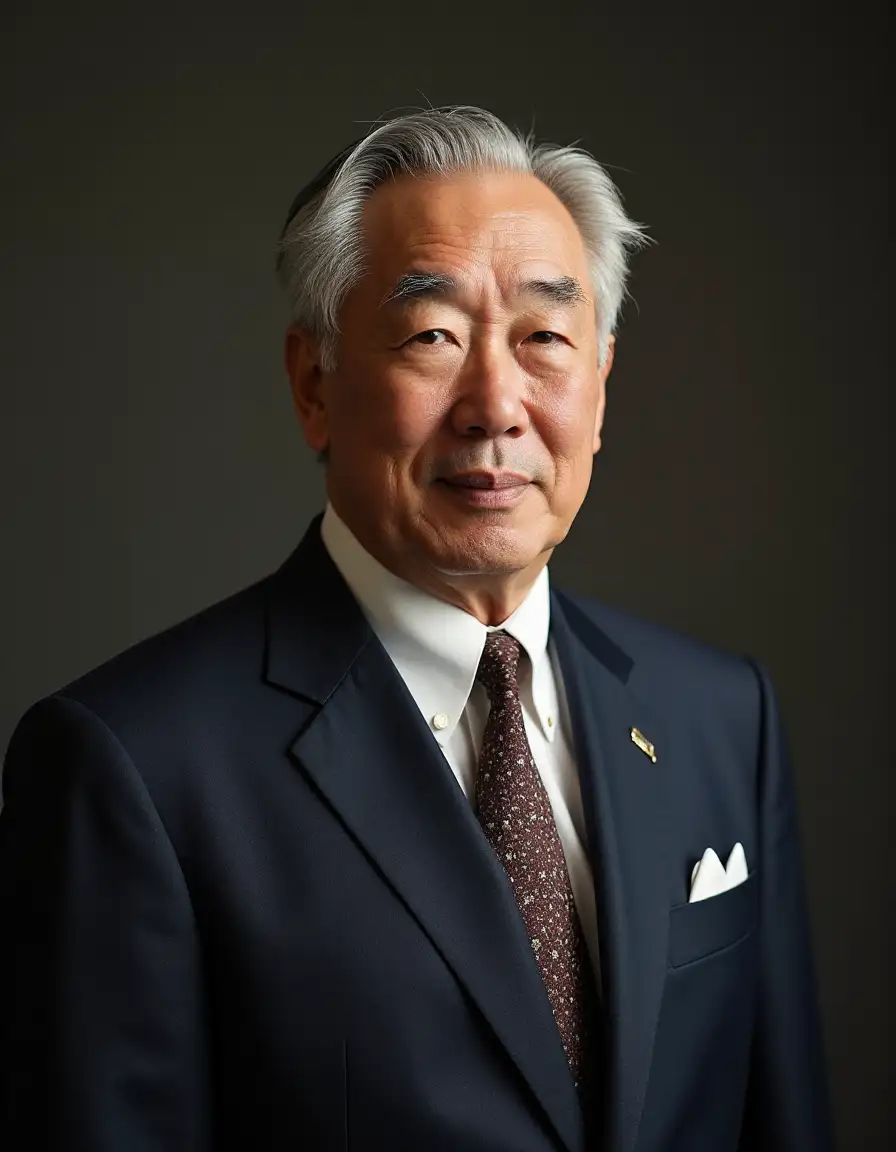
Official portrait, 168 BFC
- Matsumoto Koji (242 BFC – 97 BFC) was a Japanese statesman who is remembered as the architect of Japan’s post-Khan rise to global influence. Born in the port of Mojiko, he was reportedly fascinated by its history of foreign trade during the industrialisation of the Meiji Period. Koji studied electrical engineering at the University of Tokyo, followed by a Master’s in International Governance and Diplomacy in Paris. While there he built many relationships in the European diplomatic community, and he became an outspoken champion of developing a NATO style alliance in Japan. His first posting as a power and infrastructure consultant in Bharat while working for the Ministry of Foreign Affairs led to connections with two of the worlds top AMSST engineers.
- Despite coming from a politically unconnected family, Koji was able to work his way into the political class through his public speaking on global affairs and and advocacy for a new Japanese international treaty organisation. For two years he worked as a secretary to future prime minister Matsuda Kenjiro, a university friend, and in 201 BFC was elected to the House of Representatives from Fukui 2nd district. In his third term in 197 BFC he was appointed Vice-Minister for the Ministry of Economy, Trade, and Industry, where he was instrumental in championing a crash program in Japan to develop and deploy AMSSTs to prepare against an EMP strike from the PRC. In 192 BFC he was elected and appointed as Minister of Economy, Trade and Industry, where he developed the free economic zones that were an important driver of the 2nd Japanese Economic Miracle.
- During Khan, Koji's foresight in deploying AMSSTs left Japan as the only major power capable of aiding other nations, and gave Koji the political capital to orchestrate a mass export of AMSSTs to Europe and Bharat to aid in their recovery. He was appointed to defense minister in 186 BFC. The AMSST rollout was instrumental in the result of the Lausanne Convention in 185 BFC which Koji led, and this in turn laid the foundations for the Eurasian Bloc and the integration of Japan into the Bloc's political organisations. Koji was appointed to two other cabinet positions, Minister for Construction, and for a later government Minister for Foreign Affairs, before retiring from politics in 169 BFC as one of the longest tenured ministers in Japanese history.
- Matsumoto Koji (242 BFC – 97 BFC) was a Japanese statesman who is remembered as the architect of Japan’s post-Khan rise to global influence. Born in the port of Mojiko, he was reportedly fascinated by its history of foreign trade during the industrialisation of the Meiji Period. Koji studied electrical engineering at the University of Tokyo, followed by a Master’s in International Governance and Diplomacy in Paris. While there he built many relationships in the European diplomatic community, and he became an outspoken champion of developing a NATO style alliance in Japan. His first posting as a power and infrastructure consultant in Bharat while working for the Ministry of Foreign Affairs led to connections with two of the worlds top AMSST engineers.

Official portrait, 168 BFC
- Despite coming from a politically unconnected family, Koji was able to work his way into the political class through his public speaking on global affairs and and advocacy for a new Japanese international treaty organisation. For two years he worked as a secretary to future prime minister Matsuda Kenjiro, a university friend, and in 201 BFC was elected to the House of Representatives from Fukui 2nd district. In his third term in 197 BFC he was appointed Vice-Minister for the Ministry of Economy, Trade, and Industry, where he was instrumental in championing a crash program in Japan to develop and deploy AMSSTs to prepare against an EMP strike from the PRC. In 192 BFC he was elected and appointed as Minister of Economy, Trade and Industry, where he developed the free economic zones that were an important driver of the 2nd Japanese Economic Miracle.
- During Khan, Koji's foresight in deploying AMSSTs left Japan as the only major power capable of aiding other nations, and gave Koji the political capital to orchestrate a mass export of AMSSTs to Europe and Bharat to aid in their recovery. He was appointed to defense minister in 186 BFC. The AMSST rollout was instrumental in the result of the Lausanne Convention in 185 BFC which Koji led, and this in turn laid the foundations for the Eurasian Bloc and the integration of Japan into the Bloc's political organisations. Koji was appointed to two other cabinet positions, Minister for Construction, and for a later government Minister for Foreign Affairs, before retiring from politics in 169 BFC as one of the longest tenured ministers in Japanese history.